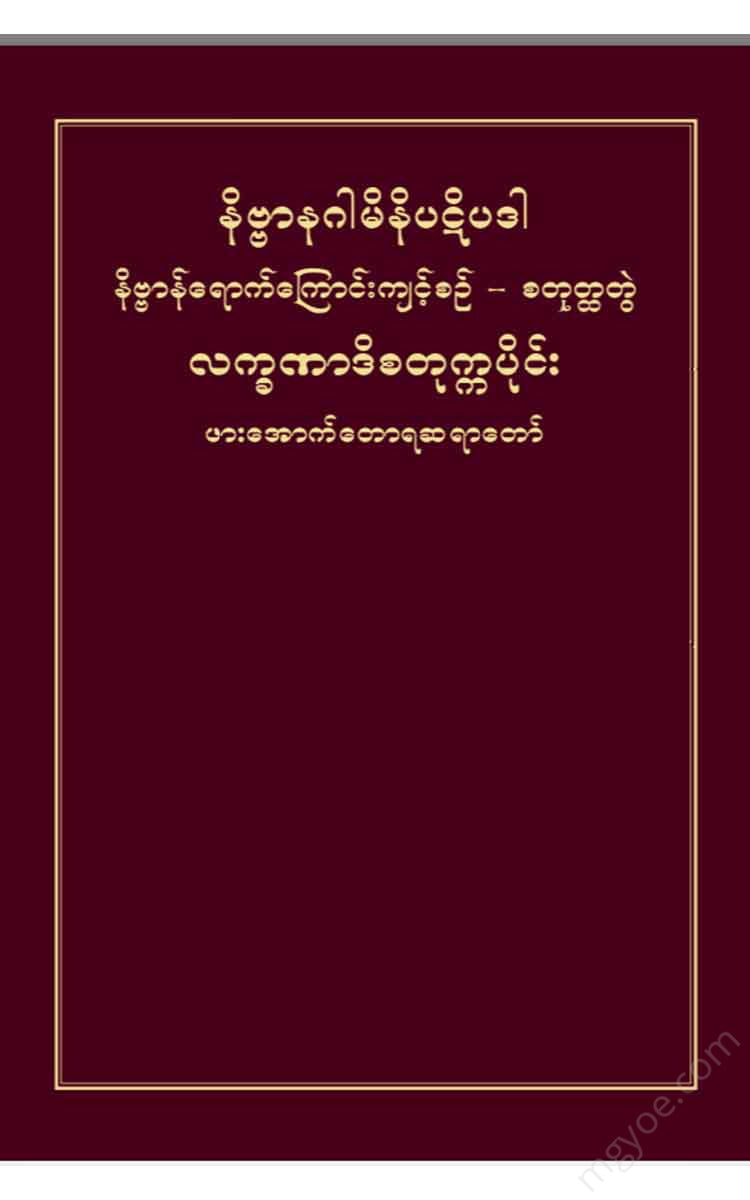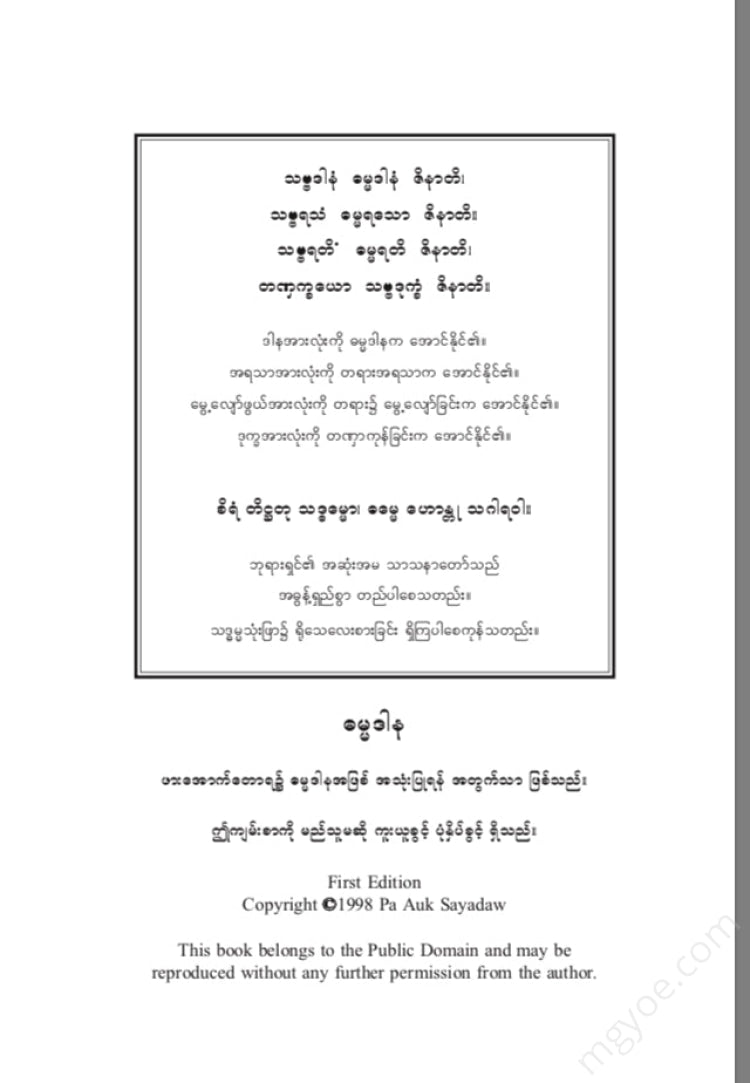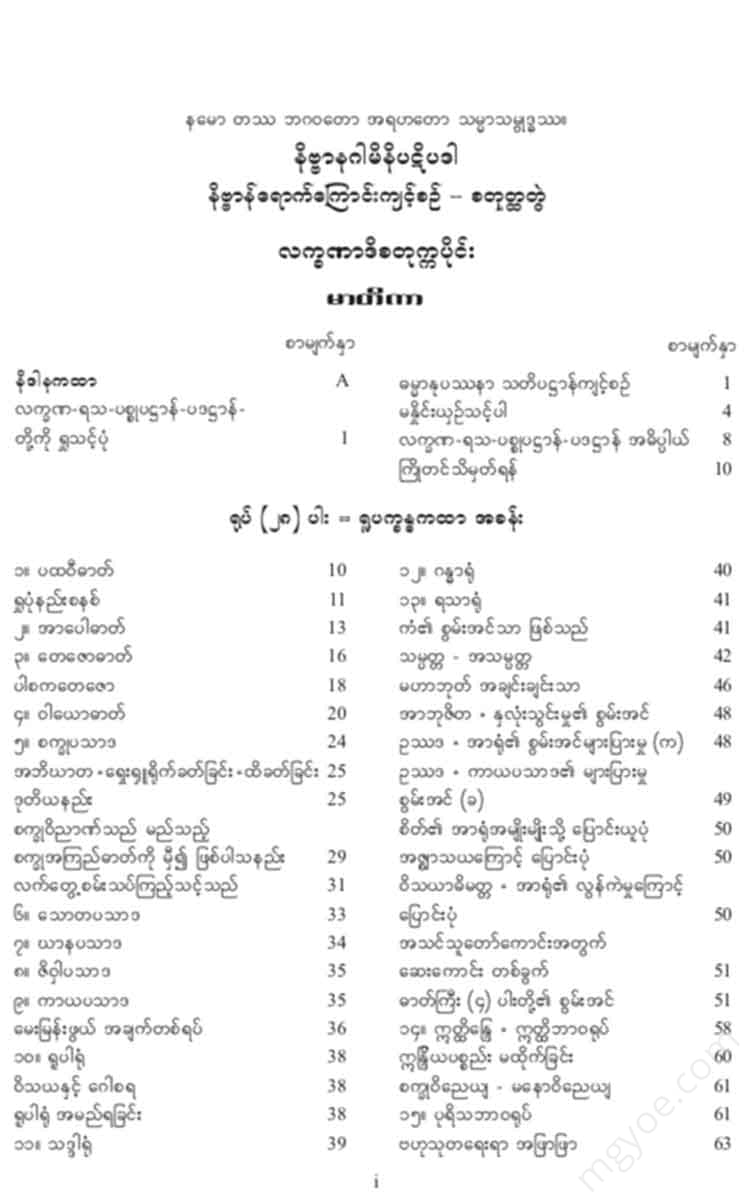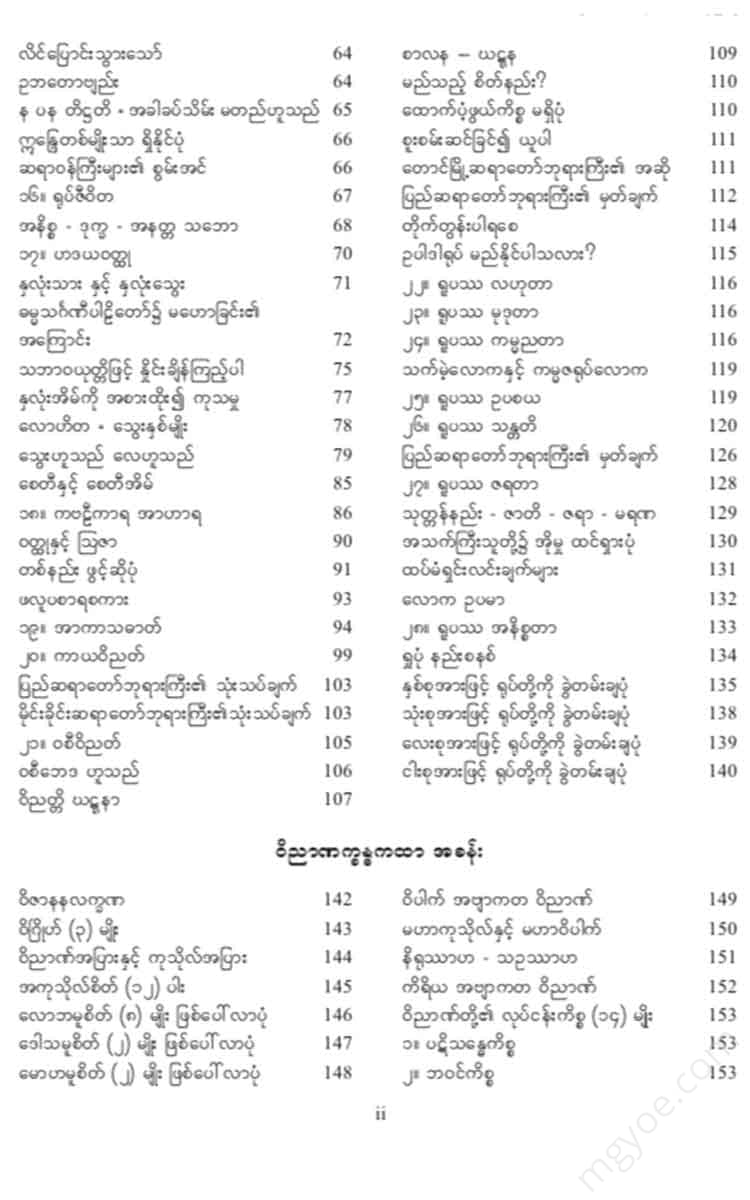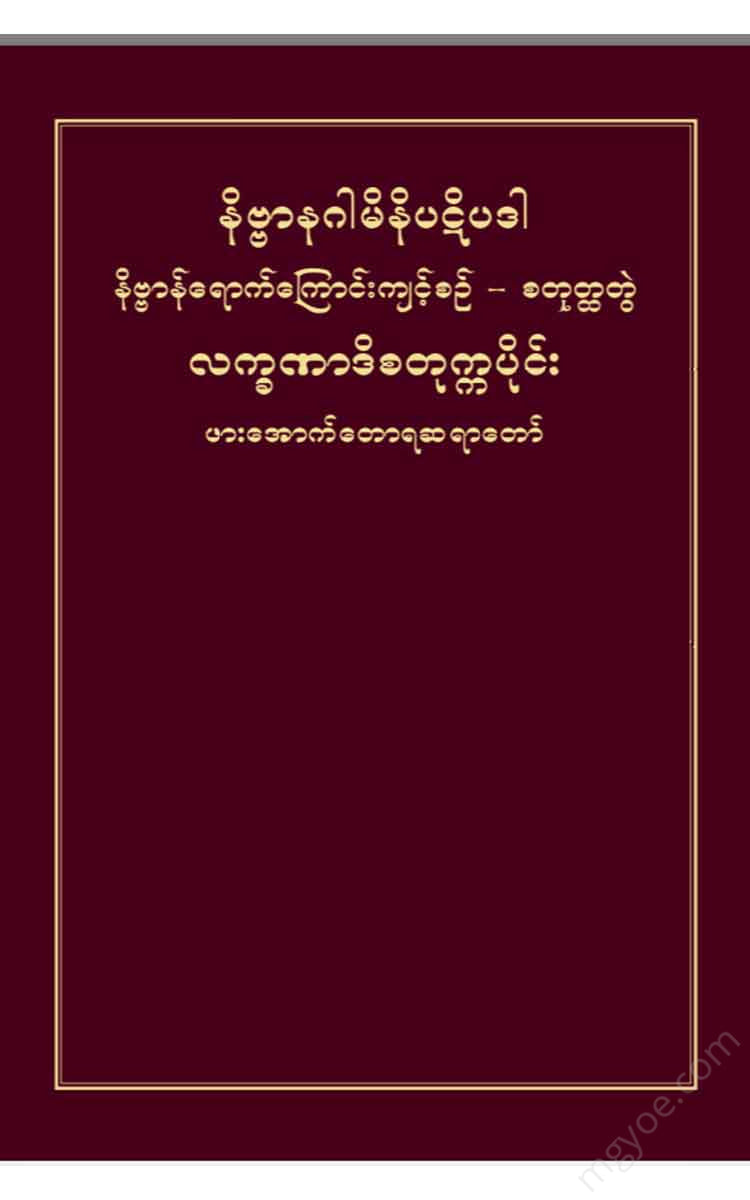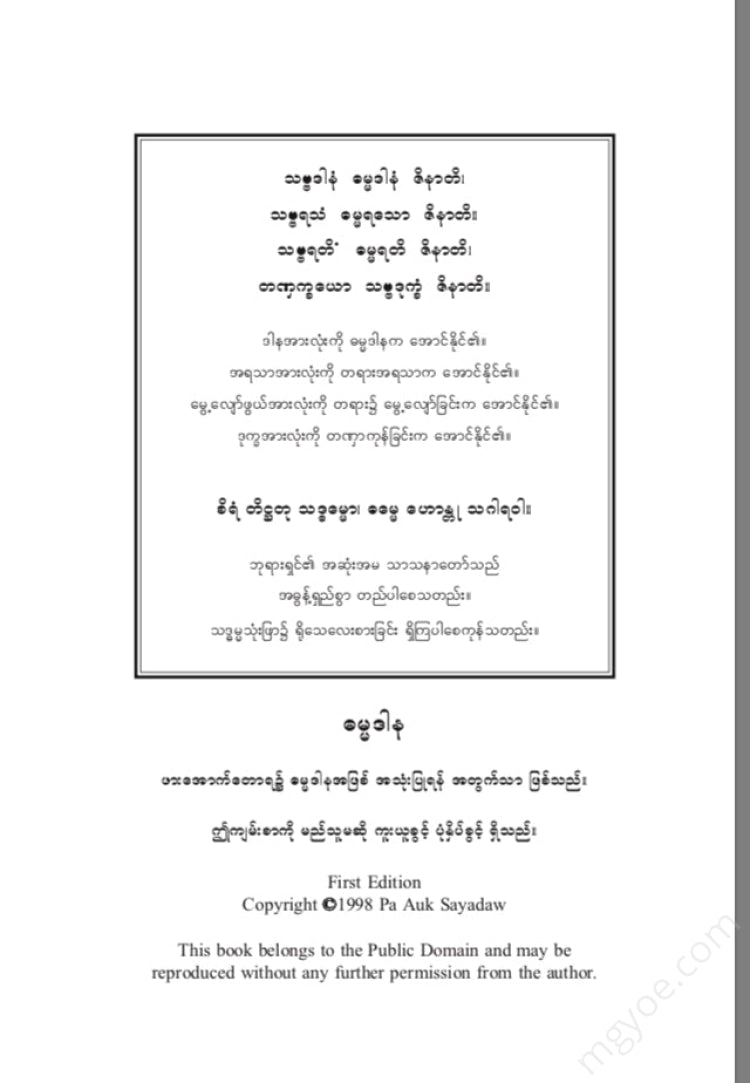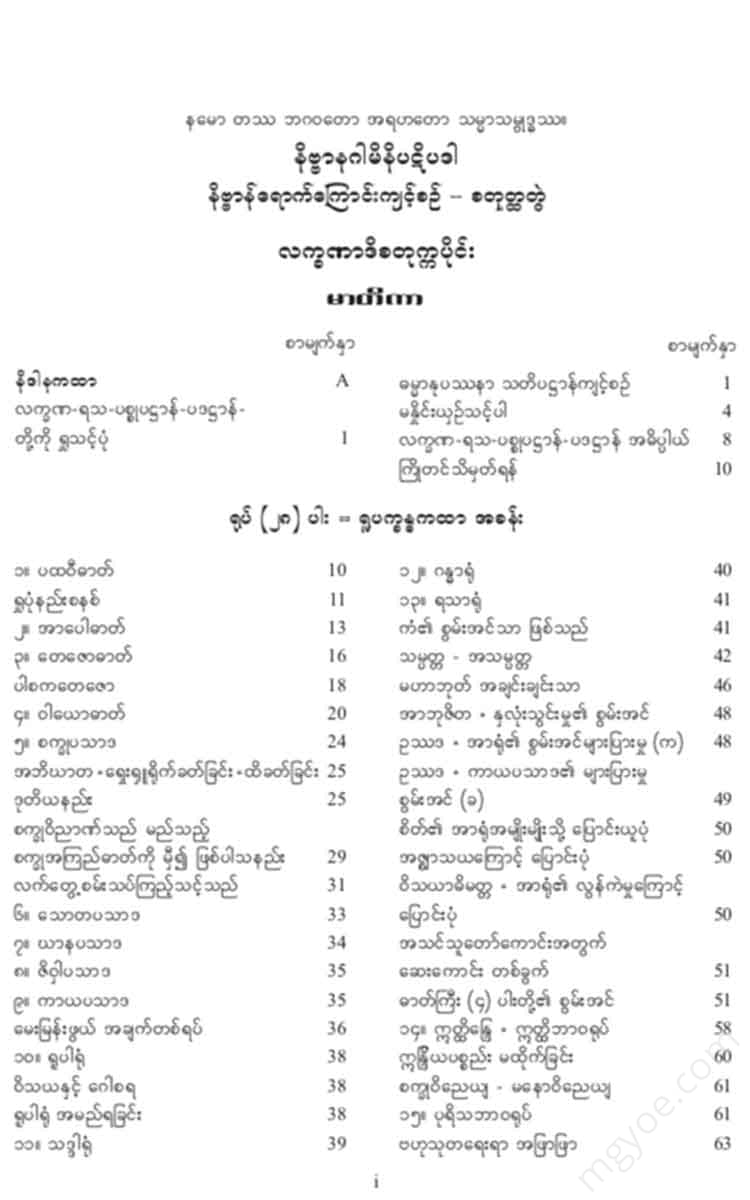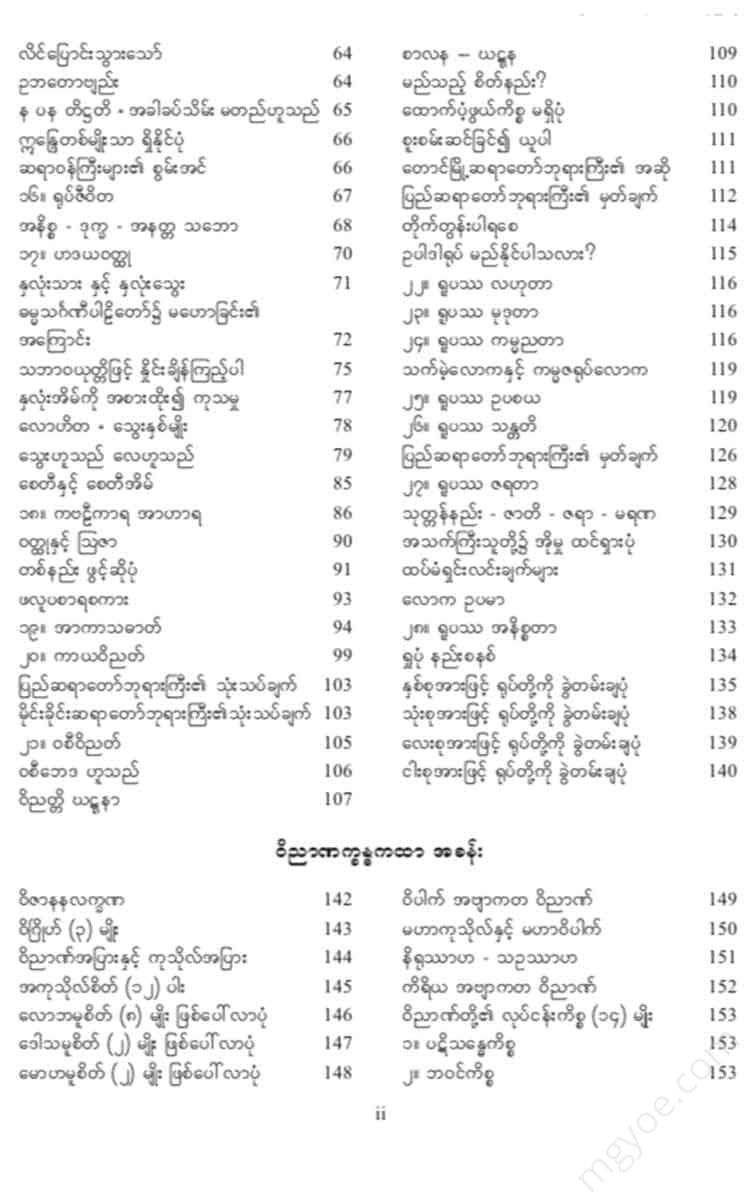Other Websites
The Venerable Phor Aok Tora Sayadaw - The Fourth Part of the Practice for Attaining Nibbana
The Venerable Phor Aok Tora Sayadaw - The Fourth Part of the Practice for Attaining Nibbana
Couldn't load pickup availability
1. This form is the form of the universe, this form is the form of the eightfold path.
2. This is pain, this is pain, this is pain, this is pain, this is pain.
3. It is perception, it is perception, it is perception, it is perception, it is perception.
4. It is the mind, it is the mind, it is the mind, it is the mind.
5. It is the mind, it is the mind, it is the mind, it is the mind, it is the mind.
(D-2-239.)
- Monks... In this Dhamma, a monk of Yogavasara -
1. (a) This is the material world.
(b) This is the nature of being and the nature of being of matter.
(c) This is the nature of the cessation and cessation of matter.
2. (a) This is the law of suffering.
(b) This is the nature of the arising and becoming of the feeling-dharma.
(c) This is the nature of the cessation and cessation of the suffering.
3. (a) This is perception.
(b) This is the nature of the arising and becoming of perception.
(c) This is the nature of the cessation and cessation of perception.
4. (a) These are the aggregates of mental formations (setāsikāsakāsakās).
(b) This is the nature of the origin and the nature of becoming of the samsara.
(c) This is the nature of the cessation and cessation of formations.
5. (a) This is the law of consciousness (consciousness, consciousness),
(b) This is the nature of consciousness and the nature of being,
(c) This is the nature of the encompassing and limiting nature of consciousness.
Thus, in the five aggregates of Dhamma, the Dhamma-consciousness, one dwells, contemplating the Dhamma-consciousness repeatedly. (D-2-239. Mahasatipatthana Sutta, Dhamma-nupassana khandapabba.)
In this discourse on mindfulness practice above -
1. Iti Rupam This is the form.
2. This is the nature of pain.
3. Iti Sanya This is the Sanya Dharma.
5. This is consciousness, consciousness is only this, there is no consciousness greater than this -
2. The sense of taste of the sense organ of pleasure,
3. The sense of knowledge, which is the awareness of the sense-body,
4. The fruit that must be achieved by the harmony of the causes of the material body.
The ability to make things happen, to make things happen,
5. The ability to discern the senses of the spiritual body and the sense of knowledge,
He began by explaining how to distinguish and retain all feeling, perception, mental formations, and consciousness with the power of the lakṇa-ṭha-pāsupāṇa-pālāṇa, and to eliminate them without any residue. By the lakṇa-ṭha-pāsupāṇa-pādāṇa-pādāṇa-pādāṇa-pādāṇa-pādāṇa, it is meant that one must know and observe all feeling, perception, mental formations, and consciousness without any residue. (Dī-ṭha-2-53. Sam-ṭha-2-44-45.)
In the above eight verses - Anavasetasarupapariggaha vutta. P. Anavasetasavemanasanyasanakaravinyanapariggaha vutta - Note the words. The five aggregates of form-feeling-perception-sanakaravinyana (5) are instructed to be eliminated without any residue by means of the lakhana-rasa-pasupapathana-padatthana. 1. Only one form, or 2. Only one mind , or 3. Only one form , and only one mind --
It does not instruct that one should retain it by means of the lakṇa-raṣa-pasu-pattāna-padātthāna. It only instructs that one should retain the infinite form-feeling-perception-samkhara-viṇyaṇa without any residue and should distinguish it with the mind. Therefore, the statements that if one looks at one form, or one mental form , or one both from the form and from the mental form, the matter can be resolved and one can reach Nibbāna are only ideas that deviate from the line of the teaching.
In accordance with the instructions of the above Pali commentary on the Atthakatha, the venerable Yogavasara person --
1. The 28 forms, namely, the physical, the spiritual
2. The feeling of pleasure, the feeling of pain , the feeling of happiness , the feeling of sadness , the feeling of aversion, and the feeling of aversion, and the causes, effects, and consequences of each of these feelings ,
3. The perception of form, perception of sound , perception of smell , perception of taste, perception of
4. All (50) of the elements that are included in the aggregates of the body, such as passion, desire, energy, and mind, and the signs, elements, and phenomena of each of these elements ,
5. One should study and understand the various types of consciousness : eye consciousness, sota consciousness , ghana consciousness , jiva consciousness, body consciousness, and mind consciousness, and the signs, properties, and manifestations of each of these consciousnesses.
This is something that a good student who desires the truth should keep firmly in mind, like a nail driven into the top of his head.
You shouldn't compare.
The venerable Sariputta, the Upatissaparivojha, attained the state of arahantship simply by hearing a single discourse from the venerable Assaji. The venerable Mahamoggallana, the Kolitaparivojha, also attained the state of arahantship simply by hearing the same discourse from the venerable Sariputta. The venerable Bahiyadarusiriya, the Arahantship, also attained the state of arahantship simply by hearing the summary of the practice from the Buddha (as explained in the previous section of the Namakammatta).
These venerable ones ask, "Where can one find time to contemplate the material and spiritual aspects in detail? Where can one find time to collect and contemplate each material and spiritual aspect, one by one, by means of signs, by means of objects
Satsāpi seta patisambhida disu dhansu papedam gisaṃti sekkhabhumiyāṃsa sekkhabhumiyāṃsa.
The great sages of the world, the
The Buddha, the
The great wisdom of the great sages,
(Mahatma-2-84.)
The venerable Sāriputta and the venerable Mahāmoggallāna, the venerable Arahants, had to practice for one eon and a hundred thousand worlds in order to attain the enlightenment of the aggāsavas. The venerable Bāhiyadarusīriyaālāya also had to practice for one hundred thousand worlds in order to become a great aggāsava who attained the title of kippabhinya etadaga. These venerables are the venerable Arahants who have attained the four ātī-sambhīdas within the teaching of the Buddha Gautama.
These four factors of perception are capable of knowing the true nature of things in these two realms, namely, in the realm of the mind , which is the property of the wise, the lower path and the lower fruition, and in the realm of the mind, which is the property of the wise, the arahant, and the arahant, the arahant.
Of these two things , the knowledge of the great sages and the knowledge of the great sages reached the point where they were able to know the truth of each and every particular thing in the realm of the dead... At the same time as he attained arahantship, he also attained the four knowledges of the great sages.
The Venerable Ananda, the wise in mind , the wise in the Dhamma , the wise in the Upali , the wise in the Khuzzatara Upasi-kama, etc., have attained to the state of being able to truly know the various aspects that are to be penetrated by the wisdom of the wise in the realm of the Buddha.
When the Venerable Ananda attained the knowledge of the path of the perfect and the fruit of the perfect, he also attained the four knowledges of the path of the perfect. When the wise men of the mind and the wise men of the Dhamma attained the knowledge of the path of the perfect, they also attained the four knowledges of the path of the perfect. When the wise men of the Upali and the Kuzjattara attained the knowledge of the path of the perfect, they also attained the knowledges of the path of the perfect.
Thus, the devotees can attain various kinds of knowledge of the three-dimensional world and the three-dimensional world, but that knowledge of the three-dimensional world is:
1. Adhigamā = If one attains arahantship, one attains the knowledge of the path and the knowledge of the end,
2. Pariyatti - Due to the joy of learning and reciting the Buddha's Pariya Dhamma,
3. Savana - either by hearing the eight-part commentary of that Pali text or by listening to the Dhamma,
4. Paripussa - In the Pali Atthakatha etc., the meaning of the words "padatta" - difficult to understand in terms of the meaning of the words, "adhyapayaththa" = difficult to understand in terms of the meaning of the words , and the meaning of the words related to the meaning of the words (khandha, ayatana, sattara, patissa, samuppada, etc.)
5. Pubva Yoga • Conducting meditation in the alms-giving and going-back places of the ancient Buddhas • By fulfilling the gatapisagatika vow, and having developed and practiced Vipassana meditation up to the level of Muncitukanta-nanya, Patisankhara-nanya , and Saṅkarupekkha-nanya, which are close to the Anuloma-nanya and Gotrabhu- nanya, -
It is pure and clean because of these (5) reasons. Among them:
1. The True Buddhas and the Buddhas,
2. The Buddhas of the Paccekas and the Buddhas -
1. Because I have cultivated and practiced Vipassana meditation until I attain the enlightenment of the Buddha, in the teachings of the ancient Buddhas, called Pubva Yoga,
2. Because he attained the knowledge of the path to arahantship, the knowledge of the arahantship fruit, which is called the Adhigamā.
Relying on these two factors, he attained the knowledge of the cause of the conflict. The disciples, however, attained the knowledge of the cause of the conflict by relying on all the five factors mentioned above. (Visuddhi-2-72.)
1. The knowledge that is known in the New Book of Suffering is called the eighth knowledge of the cause and effect. The knowledge that is known in the cause and effect is called the eighth knowledge of the cause and effect.
2. The knowledge that is known about the truth of the origin of suffering is called the knowledge of the Dhamma. The knowledge that is known about the cause is called the knowledge of the Dhamma.
3. The wisdom that is skilled in the terminology and usage of the Attha Dhamma, the truth of the origin of suffering, especially in the Magadha language, is called the wisdom of the cessation of suffering.
4. The knowledge that once again knows the eightfold knowledge, the knowledge of the Dhamma knowledge , and the knowledge of the cessation of existence is called the knowledge of the existence of existence.
(Abhi-2-307-308. Visuddhi-2-70-72.)
The Venerable Sariputta, the Venerable Mahamoggallana, and the Venerable Bahiyadarusiriyya, who were mentioned above, were all great men who, upon attaining the path of arahantship, attained the enlightenment of the arahants. In order to attain such great enlightenment, the two great sages, for a period of one eons and a hundred thousand worlds, and the Venerable Bahiyadarusiriyya, for a period of one hundred thousand worlds, practiced and acquired some of the factors mentioned above in the teachings of the ancient Buddhas. Of these (5) factors, the factor that I would like to discuss here in particular is the factor called the eight factors. Those great masters had crushed the samkaras with insight knowledge, even to the point of samkara-rupekkha-jnana, which was common in the teachings of the ancient Buddhas, near the Anuloma-jnana and the Gotra-bhu-jnana. In other words ,......
1. The five aggregates of suffering, known as the New Book of Suffering, have been distinguished and known by the intellect, which are constituted by the eleven (11) states of existence: past, future, present, external
2. The truth of the whole, called the cause-effect relationship, has been discerned and known by the mind. Through the knowledge of the signs, the causes, the conditions, and the conditions, these elements of the cause-effect relationship have been crushed and crushed by the mind.
3. The Truth of the Origin of Suffering - I have crushed and crushed these samādhis with insight knowledge, using the three-fold method of identification. I have seen with my own eyes the impermanence, suffering, and emptiness of these samādhis, with the wisdom of insight knowledge. I have striven to attain the insight of samādhis, which allows me to ignore and be at peace with the impermanence, suffering, and emptiness of these samādhis.
These are the characteristics of those great ones. Therefore, among those great ones, the two sons of Aggasavaka before they became sotāpan in this life, and the venerable Bahiyadarusiriya before he attained arahantship, did not have time to crush the formations by the method of lakṇa-rasa-pasu-pattāna-padātthāna, but in the teachings of the ancient Buddhas, they had crushed these formations by the method of lakṇa-rasa-pasu-pattāna-padātthāna, they had crushed them by the knowledge. They had crushed them by the knowledge. Such crushing and crushing by the knowledge is a powerful factor in the realization of the Four Noble Truths.
A good student should not compete with such great men who have perfected the art of yoga. If they were to compete, they would have attained the path-fulfilling Nibbana without holding on to form and name through the virtues of the lakṇa-rasa-pasu-pattāna-padātthāna. I too would have thought that I could attain the path-fulfilling Nibbana without holding on to form and name through the virtues of the lakṇa-rasa-pasu-pattāna-padātthāna. Listen to the short Dhamma verse in which the venerable Sāriputta, the venerable, became a sotāpan. Or read it.
Ye Dhamma hetuppabhava, tetham hettom Tathagata aha.
The fourth is Nirodha, the great ascetic of the Avatamsaka.
1. Those truths of suffering which are the truths of the origin of suffering, if they are the truths of the origin of suffering, have a good beginning.
2. The truth of the origin of suffering and the truth of the origin of suffering,
3. The truth of the cessation of suffering (the truth of the origin of suffering) and the truth of the cessation of suffering,
4. The truth of the path leading to Nibbana - the truth of the path leading to Nibbana -
